I know this is old. I am writing this in sympathy to the OP, and others with similar issues.
I have a similar problem, but I think it is to be expected. Unfortunately, I was not expecting this from anything I read, so I am sharing an example of a real-life instance. (If this is NOT normal, of course, I would LOVE to hear how to fix it.)
I have a grid-tied solar array with 16 panels arranged in 2 strings with 8 panels each, using a Growatt Min 6000-TL-X string inverter. This is grid-tied with no batteries, and I can't fiddle with MPPT.
The panels are 365 W producing a theoretical total of 5840 W, well below the maximum for the inverter. I never get anything close. I get around 3800 W peak at midday.
Imp is 10.62 A and Isc is 11.26 A per panel. Vmp is 34.4 V and Voc is 41.4 V per panel.
I only recently completed it and turned it on. I get good irradiance with no shadows.
When measured with no load (disconnected from the grid) I get 290 to 304 V per string to the inverter, that's 290/8 = 36.25 V. This is higher than Vmp but lower than Voc per panel.
When measured under load, the current increases with the expected curve but never gets to 10.62 or 11.26 A. I expected current to vary, and accept that the current is probably appropriate for my angle and time of year.
I expected the voltage to behave differently than it does. When measured under load the voltage varies throughout the day. It never gets to the no-load measurement. It actually goes DOWN when irradiance and current increases. It does not follow the current curve, but starts high, dips low, rises again, and more or less levels out, slowly decreasing until the end of the day when it rises again and bobs around a bit. I assume this is a function of grid load and current affecting voltage.
Although both strings should be equal, one gets to 272 V during morning hours with little current, and then sags to 250 V, sometimes as low as 224 V. The second string stays below 250 V and sometimes goes below 200 V.
I have a "shine" monitor that produces nice graphic outputs. The current and power curves look reasonable (although lower than expected). The voltage is not a nice curve, and the odd shape was not expected, but I have never seen other people's curves, so I was NOT expecting this. If you are also new to this, and not expecting such odd looking results from your voltage measurements, at least now you know you are not alone, and this is probably normal.
